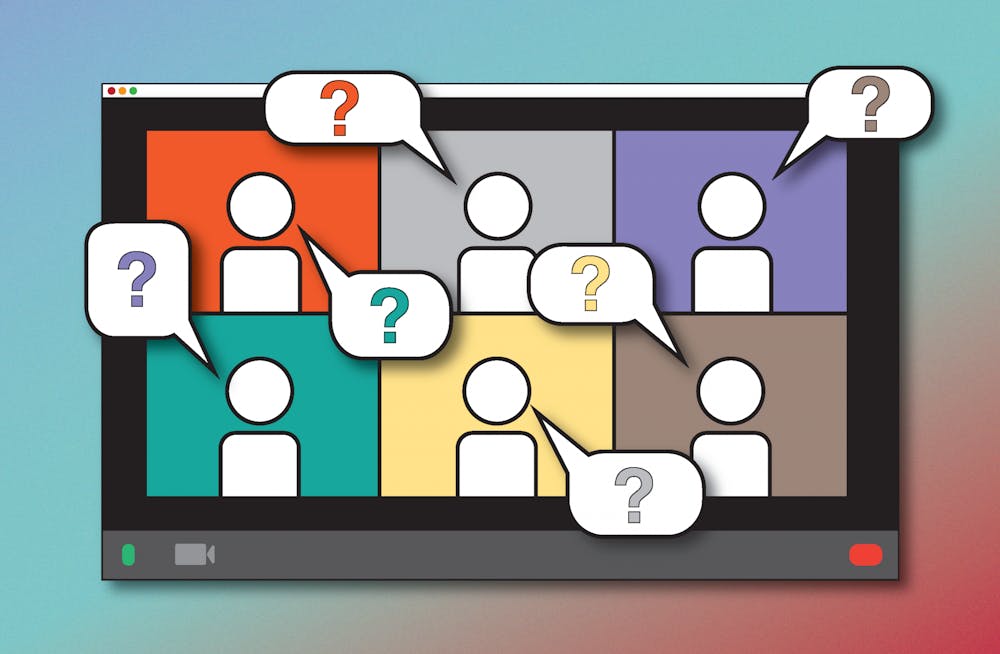For education majors, student teaching their senior year is expected. When elementary, middle and high schools across the country have to alter their methods of teaching because of the pandemic, student teachers have to adapt as well.
Amanda Darrah is a senior integrated social studies major. As a student teacher, she teaches world history and psychology at Northwest High School in Cincinnati.
“It’s very different than anything I expected,” Darrah said. “I’m never standing in front of a classroom giving a lesson.”
Northwest’s response to the pandemic includes giving students the option of remote or in-person learning. All lessons and assignments are posted online for all students; nothing is synchronous.
Students that opted for in-person learning are placed in a cohort of 15 students taking similar classes. They stay in one classroom while Darrah, as well as other teachers, switch between three classes throughout the day.
In-person classes, however, are less like traditional lessons and more like a study hall. Students do their work and ask for help when they need it. Darrah frequently helps students with other subjects.
Although this semester is different from others, Darrah recognizes the importance of her role.
“Even though it doesn’t look like the same classroom … I still am responsible for giving these students an education,” she said.
Because she teaches most students online and sees only a few students in class while socially distant, Darrah is making an extra effort to connect with them.
“I think the biggest thing that I’m missing out on is the face-to-face interaction with students and being able to work with them in person because that’s how you develop relationships and classroom management skills,” she said.
To make up for that lost interaction in person, Darrah finds new, safe ways to get to know students.
She sends out Google Forms asking them questions, like how their week has been, and responds to their answers. She holds office hours over Zoom like a college professor might and promotes classroom community by having her students create videos about themselves to share with the whole class.
Enjoy what you're reading?
Signup for our newsletter
Despite missing out on certain aspects of teaching, this hybrid method is still granting Darrah valuable lessons.
“It’s definitely taught me to be flexible and [value] student feedback,” she said. “It’s important to keep in mind that … [students] are people and they’re more than just a name on a screen or a kid in a seat.”
Colton Morton is also a senior integrated social studies major. He is a member of Miami’s Urban Cohort, a program that pairs students with high-need schools.
Morton student teaches history at Oyler Community School in Cincinnati. Oyler will be completely online for the first four weeks of the semester with synchronous classes over Zoom. Then the district will meet to decide if a hybrid model is possible.
“For me, it’s a lot of … virtual uncertainty,” Morton said.
As a student teacher, Morton is not allowed in the school building for now. Not only will it be difficult to connect with his students, it’s also difficult to connect and plan with his cooperating teacher.
Morton fears he is not equipped for online learning. He says it’s a lot harder to manage a classroom and gauge what students need while in a Zoom meeting.
Morton looks forward to learning the ins and outs of virtual learning which he thinks could be helpful in the future. He also knows that as a student teacher, there’s more room for mistakes.
“If you mess up a lesson, it’s completely because this is your first run through by yourself,” he said. “I’m trying to keep that in mind even though I’m very anxious for the entire semester.”
Like Darrah, Morton will also miss interacting with students in person.
“The relationships that you build as a teacher is gonna be the biggest thing that I’m gonna miss,” he said. “I have a feeling I’m gonna struggle with keeping up with every student with it being so different this year.”
Because he doesn’t know yet how much of the semester will occur online, it’s difficult to plan ahead.
“Whether or not we will be in-person,” he said, “I guess you just come prepared with what you have and edit that as you need to adapt back to online classes or whatever the situation may be.”




